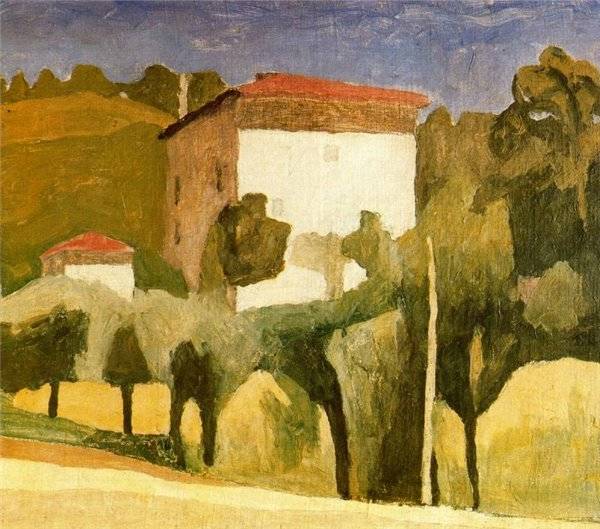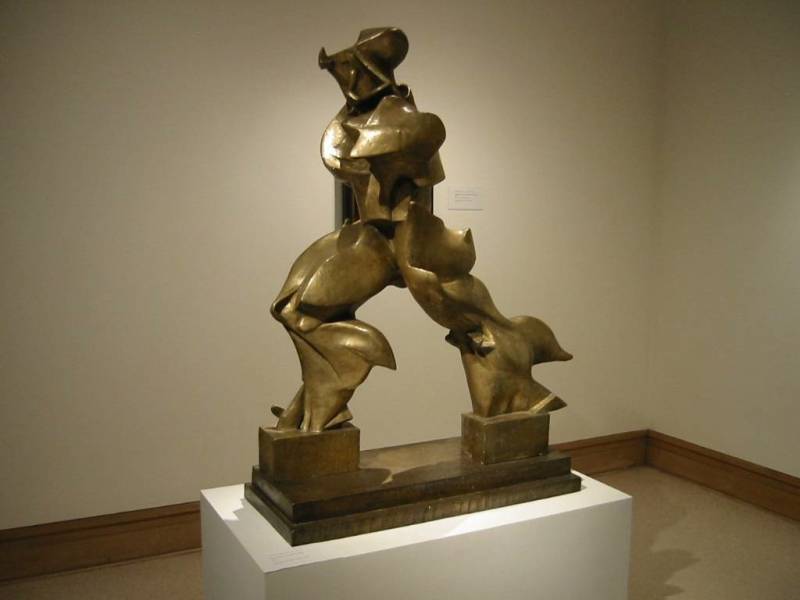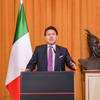"The Art Show" Features Italian Artists and Influences
“The Art Show,” an annual fair of the Art Dealer’s Association of America, just ended last weekend. It took place March 4 - March 8 at the historic Park Avenue Armory. The art fair included multiple artworks by Italian Impressionists and Futurists. Many other works draw clear inspiration and influence from these Italian artists.
An example of Italian influence is manifested in Barry X Ball’s sculptures at Sperone Westwater. His machine-carved and hand-finished works reflect those of the early twentieth century, whose innovation and experimentalism saw a brighter future.
The sculptures of Belgian black marble and bright gold are copies of Umberto Boccioni’s Futurist sculpture Unique Forms of Continuity in Space (1913), a man surrounded by flame-like-shapes striding towards a promising future.
The Futurists wanted to break away from the Classical and Renaissance styles that were still prevalent in Italy in the beginning of the twentieth century. Boccioni’s statue is representative of this desire for change; the surface of the statue seems to be transforming constantly, and the powerful strides charge forward towards an unfaltering destiny.
The immediate environment is also carved around the figure. Shapes similar to flames lap at the figure’s legs and give the idea of motion. This idea to sculpt the immediate environment around a figure is voiced in Boccioni’s “Technical Manifesto of Futurist Sculpture” (1912). The influence came from another Italian sculptor, Medardo Rosso, who made impressionistic plaster or bronze busts covered in wax of people in Paris. These figures merge into the space around them.
At the entrance of the fair is Luhring Augustine’s booth “Cords,” by Italian conceptualist Michelangelo Pistoletto. It has four panels of mirror with photographic cutouts of stanchions connected by ropes. In a review of the fair by The New York Times, the ropes were interpreted as “an atmosphere of exclusivity fostered by high end galleries like the 72 convened there.” Yet the mirrors incorporate the viewers into the artwork, and set the tone for the rest of the fair. The art invites viewers to find reflections of themselves and their cultural identity.
As the focus moves to the rise of Modernism in the 19th century, viewers do not see Manet and Paris, but James McNeil Whistler and England in “Whistler and His Influence” at Thomas Colville. The seven small paintings and drawings are impressionistic images of people on beaches viewed from far away. Whistler attempts to represent perceptual experiences in his paintings.
This section includes small works by Giorgio Morandi, an Italian painter, draughtsman, and printmaker.
Morandi attended the Accademia di Belle Arti in Bologna and was inspired by the contemporary art in books on Impressionism, along with articles by Ardengo Soffici in La Voce. He was able to connect with other artists in Bologna who embraced these new ideas. Morandi often went to Florence to study the works of Giotto, Masaccio, and Paolo Uccello, where he met Umberto Boccioni at the Futurist exhibition Lacerba. Soon after he met Boccioni, Morandi showed his first paintings at the Albergo Baglioni in Bologna and the Galleria Sprovieri in Rome.
The Italian artists represented in “The Art Show” step away from mainstream art to produce something with lasting impact, and continue to influence newer works by current artists.







































i-Italy
Facebook
Google+
This work may not be reproduced, in whole or in part, without prior written permission.
Questo lavoro non può essere riprodotto, in tutto o in parte, senza permesso scritto.